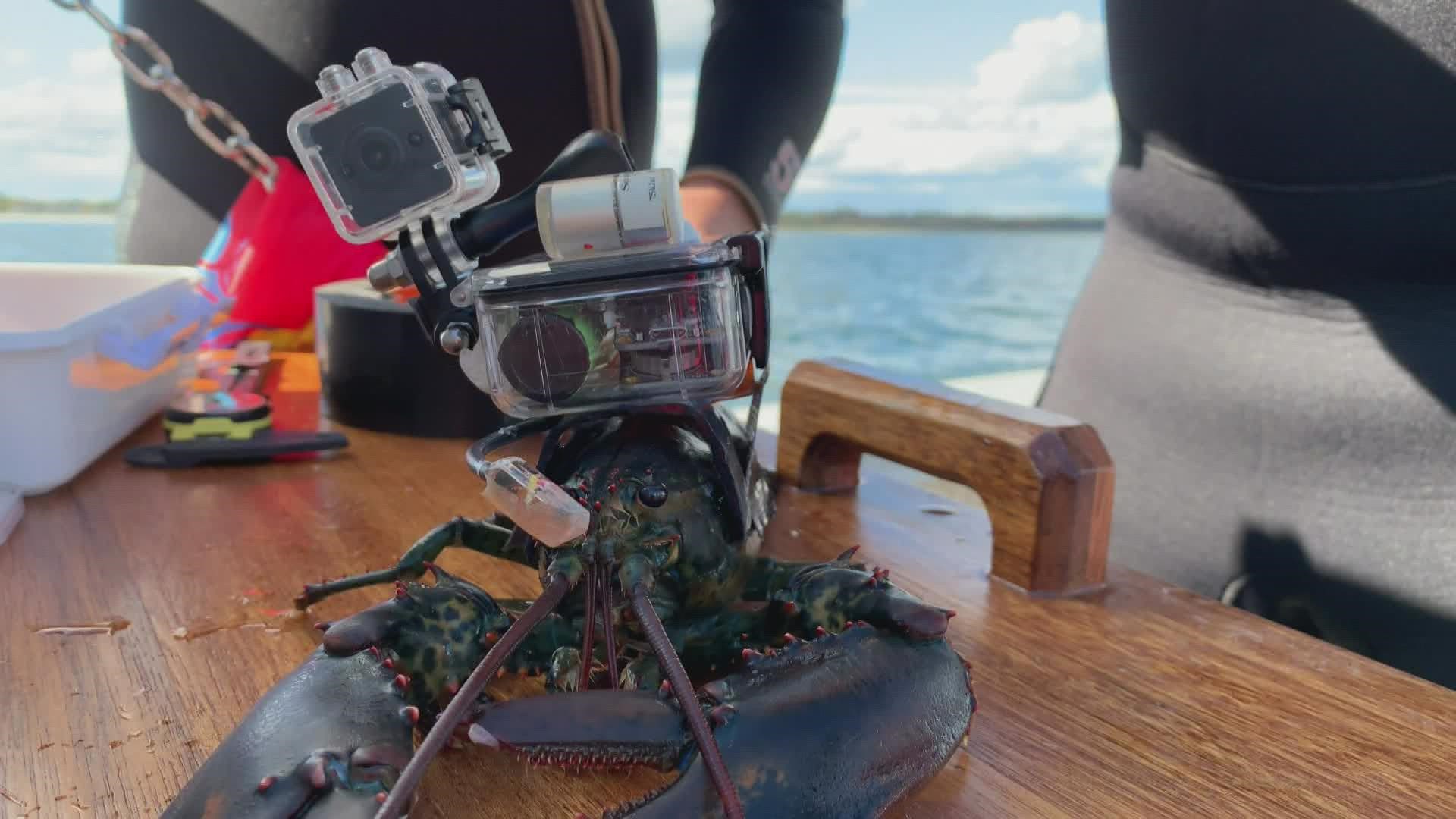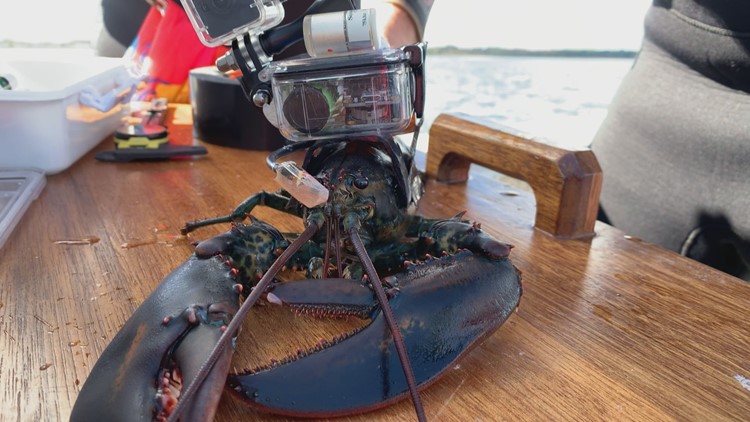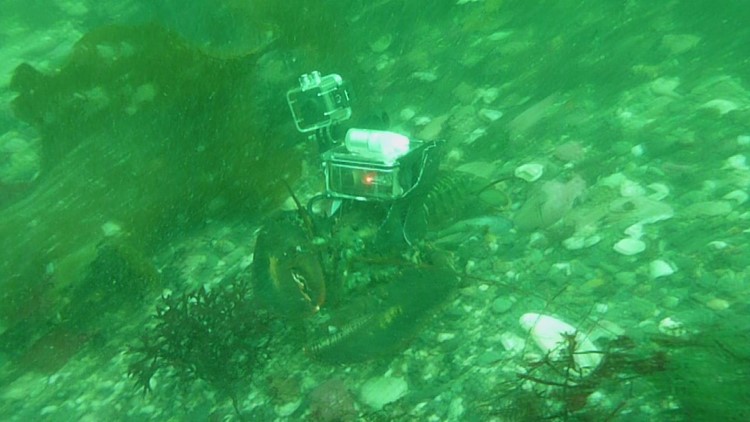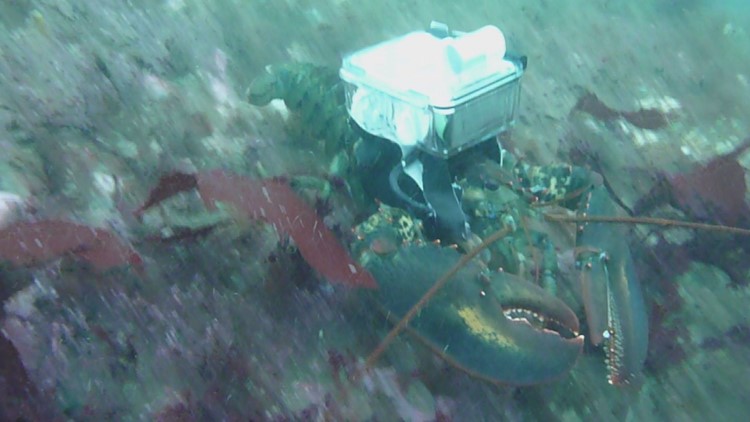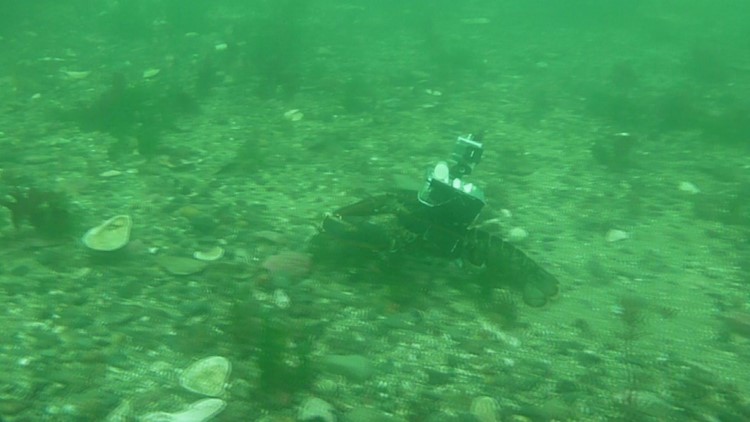WELLS, Maine — Lobstering is a half-billion-dollar industry in Maine, which means understanding the fishery is an integral part of keeping it sustainable and healthy.
But there is still so much we don’t know about how lobsters live.
Scientists at the Wells National Estuarine Research Reserve at Laudholm Farm are working on some of the most basic questions about lobster behavior, and they're doing it by studying lobsters in their natural habitat.
A little history, first.
In the last decade or so, the lobster industry has seen record-high landings. Scientists believe rising water temperatures are optimal for lobsters, and the lack of other predators, like cod, means it's a good time to be a lobster in the Gulf of Maine.
"Now the predators of lobsters are humans and other bigger lobsters," Dr. Ben Gutzler explained.
But can the boom last, or is it heading for a bust?
Dr. Win Watson has been studying lobsters for decades and said there are still so many things we don't know about lobsters.
"We're worried that the warming waters will affect their behaviors and change their distribution. [We] need to understand how temperature influences both their behavior and their movements and their physiology," Watson said.
Gutzler is a postdoctoral fellow at Wells Reserve with a passion for fieldwork and diving. He is attempting to answer long-running questions by studying lobsters in their natural habitat for periods of 48 hours at a time.
How is he doing it? Gutzler has created his own device, a C-HAT, or Crustacean Heart Activity Tracker.
It's pronounced "sea-hat," which is fitting because it sits on a lobster's head. The C-HAT, or lobster backpack. tracks a lobster's heart rate, the temperature of the water, where they are going, and even how often they eat. Food consumption is measured by gluing a tiny magnet to the mandible bone to monitor how often lobsters are chewing.
"It's like a Fitbit that you put on a lobster and, you know all the details that you can get from your Fitbit, that's the same kind of thing that we're creating here for the lobsters," Watson explained.
After diving for willing participants, Gutzler and Dr. Jason Goldstein, research director at the Wells Reserve, attach the backpacks using super glue and duct tape. They release the lobsters and let them roam for 24 to 48 hours, which is about the life of the backpack's battery.
Gutzler uses a hydrophone to hear a pinger attached to the backpack to retrieve his device. He said attaching the backpack to the lobster does stress them -- he can tell because he is measuring their heart rate -- but he said it doesn't take much time for them to acclimate to the weight of the device. When the backpack is removed, glue residue is left on the lobster's shell but it will be good as new when they molt.
Gutzler is not always able to find the lobster with the C-HAT. Sometimes they simply travel too far for him to find. The C-HAT is made with off-the-shelf parts that make it relatively inexpensive to make -- around $100.
"They don't require sophisticated assembly skills. Anyone with a soldering iron and moderate knowledge of programming can put one together," Gutzler explained.
Currently, Gutzler is looking at stress responses in lobsters and he's been trying to determine how often they eat. His preliminary data shows lobsters treat the ocean as an always-open buffet rather than collecting food and bringing it back to a den as had been previously hypothesized.
Because crustaceans enter lobster traps to eat, knowing how often they eat is critical to the fishery.
"This will tell us how many of the hours of the day they are moving and what shelters they prefer and just [a] sort of granular look at typical behaviors of free-ranging lobster. We have data in lab studies but there is only so much of [the ocean] you can replicate," Gutzler said.
Lobster fitness trackers
The data is still in the early stages as Gutzler works to share his technology with others. Gutzler is currently collaborating with other scientists and organizations across the state, including at the University of Maine Lobster Institute where they are using the backpacks to monitor lobsters as they are shipped through the supply chain.
Gutzler is working to publish his findings.
"Having a better understanding of the behavior and activity of lobsters on this relatively short time scale lets us understand a lot more about what they're actually doing, which has really interesting implications for things like the fishery," Gutzler said.
RELATED: UMaine using mini fitness trackers, devices to improve lobster survival throughout supply chain

